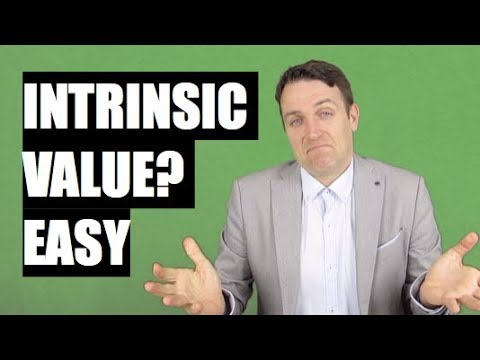Posted on Monday, February, 17th, 2020 in Announcements.
Contents
The interest expense and the tax shield for the interest expenses are adjusted. You can also calculate the FCF by looking at the balance sheet for the current and last periods. The https://1investing.in/ company’s earnings before interest are adjusted for taxes, changes in working capital, and non-cash expenses. The capital expenditure is subtracted to arrive at the free cash flow.

Furthermore, if you notice that the cash flow of two companies is the same, you should not automatically assume that their prospects are similar. Remember, some industries are more capital intensive than others, which is why they may have higher capital expenditure. If your investigation shows the capital expenditure to be high, you should find out the reason for the same – whether it is expenses concerning growth or general expenditure. To be well-versed with these aspects and to analyse cash flow systems, you should read the quarterly or annual reports of the company. Amortization and depreciation are basically the non-cash expenses on the income statement of a company. Depreciation refers to the cost of capital assets on the balance sheet being used over time, and amortization represents the cost of using intangible assets like goodwill over time.
EBITDA does not account for changes in the working capital, which makes it even more distinct from the correct cash flow definition. Since EBITDA are distributed between all types of investors in the company , it reflects the fundamental value of the company as a whole. Therefore, a multiple using total company value is logically more appropriate. Having explained free cash flow meaning and how to calculate it, let’s understand why it is significant. If you see substantial negative net income in the financial statements, it is an indicator of negative FCFE.
Multiples are the proportion of one financial metric (i.e. Share) to another financial metric (i.e. Earnings per Share). It is an easy way to compute a company’s value and compare it with other businesses. Let’s examine the various types of multiples used in business valuation. However, you can also use the discount rate as the rate of return that investors want to earn from the stock. For example, let’s say that you want a return of 12% from stock. In other words, discounted cash flow analysis forecasts the future cash flow of a company and later discounts them back to their present value to find the true intrinsic value of the stock .
Typically, such a measure helps to compute the profitability and financial health of a company. For a more focused analysis, one can use a specific type of FCF like – free cash flow to firm. While there are some industry wide accepted methods for valuation, it isn’t an exact science it is an art. The entire process is filled with a series of assumptions and estimations. Additionally, the valuation methods are easily manipulated based on the time period of which the analysis is being done.
EV/Revenue– This is a rather rudimentary form of deriving enterprise value as it shows the Enterprise value as a proportion of revenue. The definition of revenue can differ in respect of accountancy methods and taxation so this metric is slightly affected by differences in accounting and other considerations having its impact on the final ratio. The most common method to determine valuation of a service firm is by using a Valuation Multiple, it is a factor used to multiply an economic profit for deriving a figure meant to represent the business value of the firm. As a thumb rule for the discount rate, use a higher value for the discount rate if the stock is riskier and a lower discount rate if the stock is safer (like blue-chip stocks). This rule is in accordance with the principle of the risk-reward which claims a higher reward for a higher risk.

The terminal value can be calculated either by using the Perpetual growth rate or Exit multiple technique. The exit multiple approach assumes the company is sold at a multiple of a metric based on currently observed comparable trading multiples for similar businesses. For example, we can assume EV/EBITDA as the exit multiple while calculating the DCF. The absolute valuation is based on a more complex methodology – future cash flows are predicted, discounted to the present value, and then the intrinsic value is calculated.
It primarily denotes the money available for all company investors, including shareholders. So, if a company has more free cash flow per share, it indicates that it has enough cash for purposes such as paying debt, growing the business, buying back stock or paying dividends to the shareholders. One can also surmise that a company’s share prices with high FCF per share will rise, indicating that the earnings fcff formula from ebitda per share have also gone up. Along with the criticism of EBIT and EBITDA, the EBIDA determine does not embody other key information, such as working capital adjustments and capital expenditures . This can embody many nonprofits, corresponding to non-for-revenue hospitals or charity and religious organizations. It can also be referred to as the levered free money move or the circulate to fairness .

In short, if the inputs are not reasonable, the out will also not be correct -‘Garbage in, garbage out’. He is an NSE Certified Equity Fundamental Analyst with +7 Years of Experience in Share Market Investing. Kritesh frequently writes about Share Market Investing and IPOs and publishes his personal insights on the market. (Try changing these values by 1% or 2% and you can notice a significant change in the result). In short, if the inputs are not reasonable, the out will also not be correct -’Garbage in, garbage out’. It is difficult to use them for forecasting of a cyclical business.
The DCF model takes the yearly FCF and projects this over 10 years into future by multiplying it with the expected growth rate . When the company’s capital structure is stable, FCFE is the most suitable. The two FCF approaches should lead to the same value estimate in the case where the company has no debt. There are two main types of valuation methods – absolute and relative.
When capital expenditures do not equal the depreciation, EBITDA is not a technically correct proxy to cash flow. This qualification to EBITDA comparisons can be meaningful for the capital-intensive businesses to which EV/EBITDA is often applied. In corporate finance,free cash flow is cash flow available for distribution among all the securities holders of a corporate entity. They include equity holders, debt holders, preferred stock holders, convertible security holders, and so on. If the dividend payment funds of the company are considerably less than its free cash flow to equity, then it signifies that the fact that the company is utilising the excess funds to increase the level of cash.
Reserves are usually set aside for the short term.The cash reserve may be put aside in the company’s bank account or a separate account designated for it. The amount of cash that a company must hold in reserve can be up to six months of operational expenses. A company should have enough cash in reserve to tide over any unexpected issues. However, if it is holding too much cash in reserve, it may be losing out on the opportunity to put the cash to better use for expansion or growth. In order to find the discounted cash flows, first, we have to project the future cash flows of the company for the next few years by assuming a yearly growth rate of the company. The terminal value of the company is also calculated for the final year.
These costs would negatively effect current year earnings, but do not accurately portray the operations of the firm. Costs should be excluding when performing any type of analysis to determine the operating and financial efficiency of a firm or to compare performance against other firms. Free cash flow is defined as the excess cash, which a company can generate after spending the necessary sums to support its operations. It is the amount that represents the surplus cash the company has after it has met its capital expenditure requirements and expanded its asset base.
A paydown factor can be calculated as the principal portion of a monthly loan payment divided by the original principal of the loan. Debt paydown is the process of decreasing the amount owed on a mortgage or other loan over time by making partial payments towards the debt. NAV is usually calculated on the basis of market value but in case market value is not available then book value can be used. The criteria for including a company in the comparable list are usually Industry classification, Geography, Size , Growth rate, margins and profitability.
Cash flows into the company in the form of revenue as it sells its products and services, and cash flows out as it pays its cash operating expenses such as salaries and taxes . The company takes the cash that is left over and makes short term net investments in working capital , and long-term investments in property, plant and equipment (PP&E). The cash that remains is available to pay out to the company’s investors such as bond holders and shareholders.
The formula for FCF we have used is “Operating cash flow – (Capex+ Advances for capex) – Investment in subsidiaries & intercorporate deposits”. In plain English, FCF is a true measure of how much money a company makes after paying not just for its expenses but also paying for various assets & equipment that it needs to run the show. You can calculate the DCF in excel by inputting all the values, projecting the future free cash flows using the growth rate, finding the terminal value, and discounting all these values to the present value. You can use this link to download the DCF calculator in excel sheets and quickly calculate the DCF value. Different investors use different approaches to find the expected growth rate of a company. Many investors who have already made up their mind to purchase a stock, can easily infiltrate the final result by assuming a higher growth rate/ terminal value or a lower discount rate.
Using this metric, we calculate P/ PV of FCF for each of the BSE100 constituents. Now, we can test whether this new God-like metric is better than P/E multiples in explaining stock price movements. Investors can quickly calculate the DCF to find the intrinsic value of the stocks using the discounted cash flow calculator.
But the FCF would show that there were cash constraints most months that were overcome in that one good month. So, FCF is significant in accounting to give a more detailed and realistic picture of the company’s cash position. Note that acquisitions of fixed capital through an exchange for stock or debt will not appear on the statement of cash flows . These noncash expenditures have no impact on current FCFF, but such information should be used in developing forecasts of FCFF. Think of FCFF as the cash flows generated by the company’s core business.
Being an indicator of a dividend-paying company, free cash flow for the firm proves useful for investors who are looking for a company that yields regular dividends. Increasing free cash flow to the firm is considered to be an excellent indication of future profits. It, in turn, helps growth-oriented investors to identify firms which intend to expand their core business and bring in more profits.